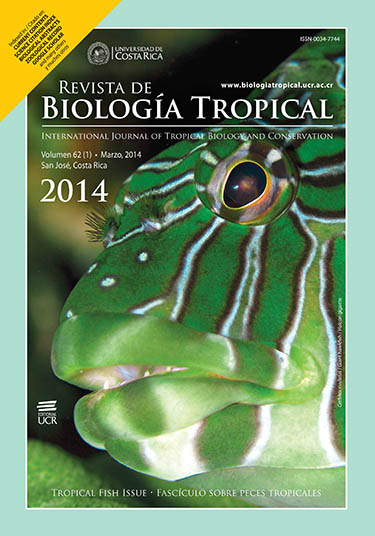Resumen
Una variedad de factores ambientales y bióticos determinan el crecimiento de la vegetación y afectan la acumulación de biomasa vegetal. Desde la temperatura hasta la composición de especies, en los ecosistemas forestales el almacenamiento de la biomasa aérea se ve influenciada por una serie de variables, razón por la cual generalmente presenta una alta variabilidad espacial. De acuerdo a esto, el objetivo del estudio es analizar las variables que afectan la biomasa área (en Inglés, aboveground forest biomass - AGB) en los bosques húmedos subtropicales del sur de Brasil y analizar su distribución espacial. Para el estudio se utilizaron los datos de un inventario forestal realizado en el estado de Rio Grande del Sur, sur de Brasil. Se evaluaron bosques de hoja ancha (Broadleaf forests) y bosques mixtos de hoja ancha y coníferas (Mixed Coniferous-Broadleaf forests). Además, se tomaron muestras de 38 parcelas de 1 ha y para la estimación de la biomasa se incluyeron todos los árboles con DAP ≥9.5cm. Los valores para la biomasa aérea se obtuvieron con ecuaciones alométricas publicadas. Las variables ambientales y bióticas (altitud, precipitación, temperatura, suelo, densidad de los troncos y diversidad de especies) se obtuvieron de la literatura o se han calculado a partir del conjunto de datos. Para el conjunto de datos, el AGB medio fue 195.2Mg/ha. Las estimaciones difieren entre los bosques de hoja ancha y los bosques mixtos de hoja ancha y coníferas: el AGB promedio fue menor en los bosques de hoja ancha (AGBBF=118.9Mg/ha) en comparación con los bosques mixtos (AGBMF=250.3Mg/ha). Hubo una alta variabilidad espacial y local en la base de datos, incluso dentro de los tipos de bosques. Esta condición es normal en los bosques tropicales y por lo general se atribuye a la presencia de grandes árboles. La regresión múltiple fue influenciada principalmente por la altitud y explicó 50.7% de la variación en AGB. La densidad, diversidad y materia orgánica también influyeron en la variación de biomasa. Los resultados mostraron una relación positiva entre la biomasa sobre el suelo y la altitud. Por lo tanto, los valores más altos de AGB se encuentran en altitudes mayores y se someten a temperaturas más bajas y un clima más húmedo. Parece que hay una importante contribución de las coníferas Araucaria angustifolia en las parcelas de bosques mixto, ya que tienen una biomasa significativamente mayor que las especies de angiospermas. En Brasil, esta especie en peligro de extinción es parte de un bosque de gran diversidad (Bosque de Araucaria) y tiene el potencial de almacenamiento de la biomasa. Los resultados del presente estudio muestran la variabilidad espacial y local de la biomasa aérea en los bosques subtropicales, destacan la importancia de estos ecosistemas en el almacenamiento global del carbono, y estimulan la mejora de futuras estimaciones de biomasa.##plugins.facebook.comentarios##
Descargas
Los datos de descargas todavía no están disponibles.






